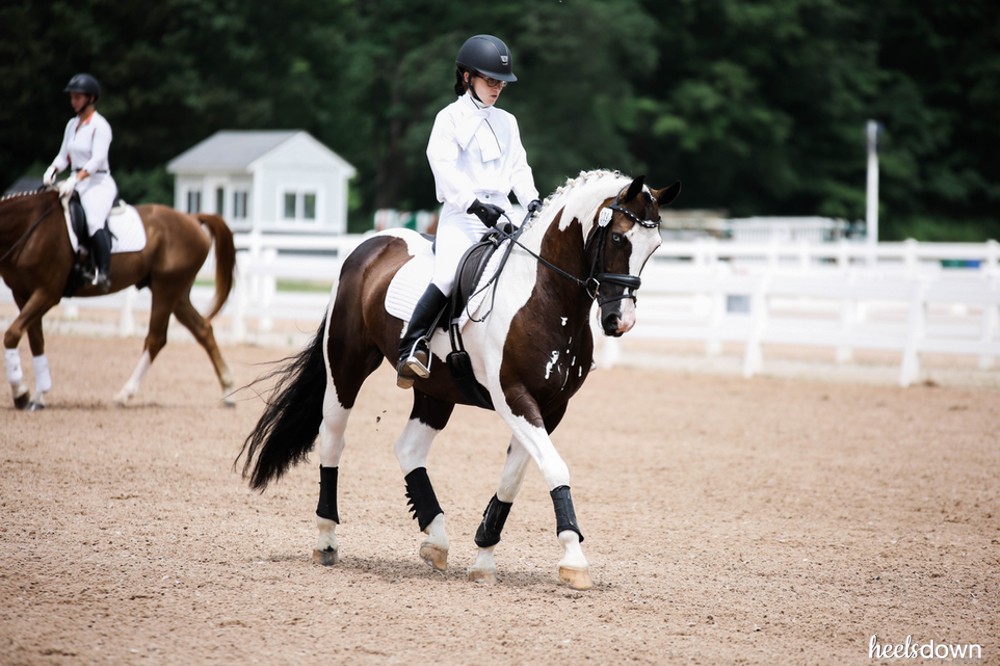Here’s How You Could Be Scoring Higher On Your Dressage Test

While it is easy to lose points on a dressage test, it is just as easy to improve your score with good riding. Here are six ways to earn higher marks at your next dressage show.
Come straight down the centerline and show a nice halt.
Like a handshake, this is an important first impression for the judge. If it is an FEI test, your horse shouldn’t trot in from the canter, slam on the breaks, or fall on the forehand. Any horse can halt for a 10, including yours.
Be strategic before entering the ring.
Remember that the judge can see you before you enter the arena, so don’t show your weaknesses while going around the outside of the arena before the bell for your test.
If your horse has a lateral walk, stay in trot or canter. Don’t waste your horse on a hot day by passaging around the outside. These decisions can affect first impressions and performance in the arena.
Ride all parts of the test.
Ride the corners, bend, and get the horse on your aids. If your corner doesn’t set your horse up properly, there’s a good chance the movement won’t be the best it could be. Judges often can predict how a movement will happen based on the moments leading up to it.
Read This Next: Address The Glitches In Your Training
Remember the importance of forward riding.
Many riders lack a full range of motion in all gaits, leading to lower quality overall and lower scores for movements. Show off your horse; it’s a show! It is not just the movement being completed that is important, it is also the quality of the movement.
Be accurate!
Tempi changes should be well-placed on the diagonals, transitions should happen at the letter, and 15-meter circles need to be exactly 15 meters, 2.5 meters in from each rail. And circles are circles, not ovals. We can’t forget to ride from point to point. If you are riding a line, ride from K to X to M. Many riders don’t ride straight at the end of the diagonal line and allow the horse to drift to the rail before the letter. If you are riding flying changes, this will take a toll on the quality of the changes.
If You Enjoy This Story, Don’t Miss: Build Confidence With Positive Training
All transitions are important, both within the gait or to a new gait.
Transitions upward and downward within a gait, or between gaits, should happen at the letter. This will show that the horse is on the aids and stepping through his hind legs into the reins.Whether it is Grand Prix or a First Level test, bold transitions build points. It’s important to come out of the corner straight and go forward promptly for the lengthenings, mediums, and extensions on the diagonal line. Use the corner to prepare and get the horse straight so you can push off right away. And, make sure to show an obvious transition back. This helps you avoid comments from judges who say your transitions were “unclear” and instead, you’ll be rewarded with a higher mark.


